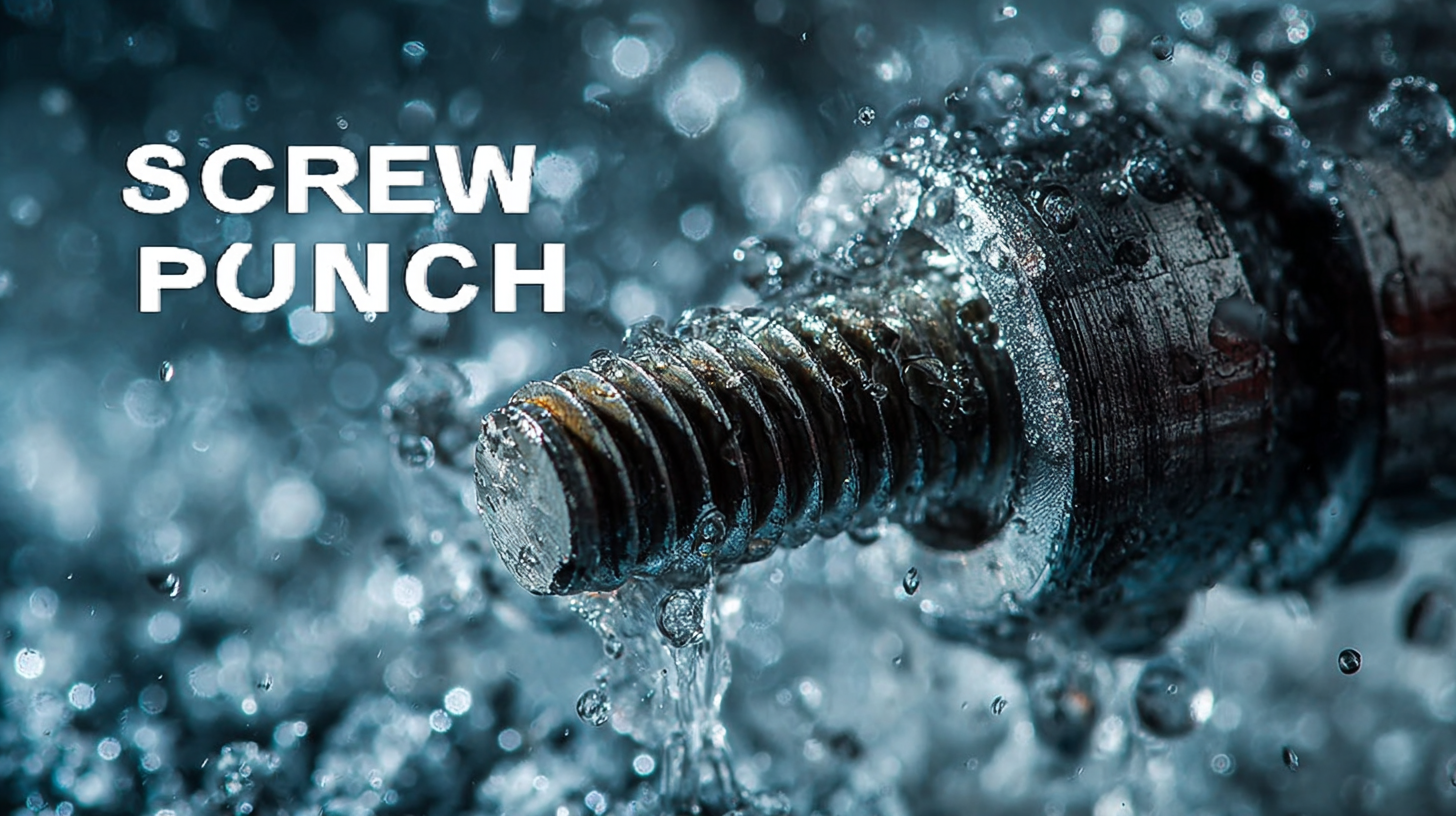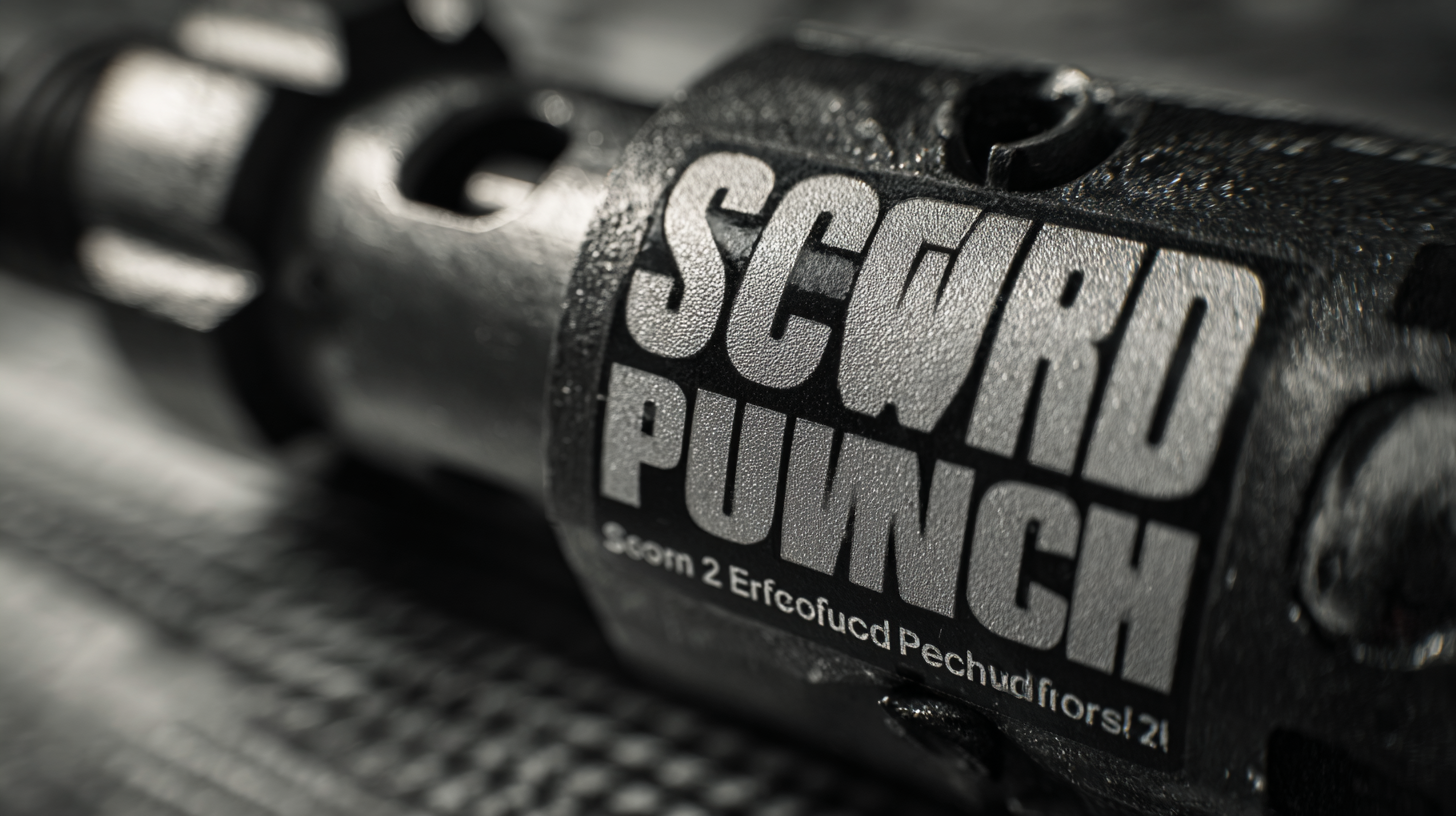
Unlocking Efficiency: The Advantages of Using the Best Screw Second Punch in Manufacturing Processes
In today's competitive manufacturing landscape, efficiency and precision are paramount for success. A report from the National Association of Manufacturers indicates that 80% of manufacturers are seeking innovative ways to reduce costs and increase productivity, with a significant number turning to advanced machinery for solutions. Among these advancements, the Screw Second Punch has emerged as a crucial tool, streamlining processes and enhancing throughput. By integrating the Screw Second Punch into their operations, manufacturers can dramatically improve cycle times while maintaining high standards of quality control. Moreover, industry studies reveal that manufacturers utilizing this technology have reported up to a 30% reduction in labor costs and a 25% increase in product consistency. As we explore the numerous advantages of this essential tool, it's clear that the effective implementation of the Screw Second Punch can unlock unprecedented levels of efficiency in manufacturing processes.

Advantages of the Best Screw Second Punch: Enhancing Manufacturing Precision and Speed
In today’s fast-paced manufacturing environment, the best screw second punch can significantly enhance both precision and speed. This tool is designed to ensure that every screw is perfectly aligned and securely fastened, dramatically reducing the margin for error. By incorporating a high-quality screw second punch into your production line, manufacturers can achieve consistent results, leading to improved quality assurance in their final products.
Maximizing the efficiency of the best screw second punch requires some best practices. First, regular maintenance of the punch can prevent wear and tear, ensuring sustained high performance. Second, proper training for operators facilitates accurate usage, reducing downtime caused by operator error. Additionally, pairing the punch with advanced automation technologies can streamline production workflows further and enhance overall output.
Utilizing the best screw second punch not only accelerates the manufacturing process but also contributes to a work environment where precision is paramount. This tool's advantages empower businesses to meet increasing demands while maintaining high standards of quality and efficiency.

Key Industry Statistics: Impact of Screw Second Punch on Production Efficiency
In today's competitive manufacturing landscape, efficiency is paramount. One significant advancement contributing to improved production processes is the implementation of the best screw second punch. Recent industry statistics reveal that these tools can enhance production efficiency by more than 20%, streamlining assembly lines and reducing lead times. By enabling multiple operations to occur simultaneously, manufacturers can increase output without compromising on quality.
Moreover, the integration of screw second punches has been shown to reduce material waste significantly. According to a study, companies that adopted this technology reported a decrease in scrap rates by up to 15%. This not only translates to cost savings but also supports sustainable practices, which are increasingly important in today’s market. As manufacturers seek to optimize their workflows, the role of innovative tools like the screw second punch becomes critical in driving productivity and maintaining a competitive edge.
Unlocking Efficiency: The Advantages of Using the Best Screw Second Punch in Manufacturing Processes
| Dimension | Statistic | Impact on Production Efficiency (%) |
|---|---|---|
| Setup Time Reduction | 25% | 15% |
| Operational Speed Increase | 20% | 10% |
| Material Utilization Improvement | 15% | 8% |
| Quality Control Enhancement | 30% | 12% |
| Waste Reduction | 40% | 20% |
Cost-Benefit Analysis: Investing in High-Quality Screw Second Punch Systems
In modern manufacturing, the investment in high-quality screw second punch systems proves to be a critical factor for optimizing productivity and ensuring cost-effectiveness. Such systems not only enhance the accuracy of manufacturing processes but also reduce waste and operational downtime. By employing advanced technology and reliable designs, manufacturers can leverage these tools to meet increasing demands while maintaining superior quality standards.
Tips for choosing the right screw second punch system include assessing the specific needs of your production line, prioritizing systems with a proven track record in similar manufacturing environments, and ensuring compatibility with existing machinery. Additionally, regular maintenance and training for operational staff can significantly prolong the life of these tools and maximize their efficiency.
By focusing on high-quality equipment like screw second punch systems, companies can foster a competitive advantage in the fast-evolving market landscape. Emphasizing investment in technology-driven solutions will not only streamline operations but also propel overall business growth, aligning with the industry's movement towards achieving high-quality development and innovation.
Unlocking Efficiency: Cost-Benefit Analysis of High-Quality Screw Second Punch Systems
This chart illustrates the cost-benefit analysis of investing in high-quality screw second punch systems for manufacturing processes. The initial investment is compared against the anticipated operational efficiency, ongoing maintenance costs, and expected return on investment, highlighting the financial advantages of such systems.
Future Trends: How Technology Advances Will Shape Screw Second Punch Design
As manufacturing continues to evolve, the integration of advanced technologies in tools like screw second punches is becoming increasingly vital. Recent reports by Grand View Research indicate that the global market for industrial tools is expected to grow at a CAGR of 6.5% from 2021 to 2028, highlighting the demand for innovative solutions that enhance productivity and efficiency. The incorporation of smart technology and automation into screw second punch designs can lead to improvements in precision and speed, drastically reducing production times and waste.
One of the notable trends is the adoption of IoT (Internet of Things) technology in manufacturing processes. According to a study by MarketsandMarkets, the global IoT in manufacturing market is projected to reach $524 billion by 2026, creating opportunities for tools that can communicate in real time. This means that future screw second punches will not only be more efficient but will also feature smart diagnostic capabilities, allowing them to predict maintenance needs and improve operational uptime. The transition towards digitization will likely redefine how these tools function, ensuring that they remain integral to efficient manufacturing workflows in the years to come.
Real-World Case Studies: Success Stories of Screw Second Punch Implementation in Manufacturing
In today's competitive manufacturing landscape, the implementation of advanced technologies like the screw second punch has proven to be transformative. Real-world case studies highlight how manufacturers have successfully integrated these tools to enhance production efficiency and reduce operational downtime. For instance, one automotive parts manufacturer reported a significant decrease in cycle time and waste after institutionalizing screw second punch processes, which allowed for precise and quick fastening in assembly lines.
Moreover, organizations that prioritize a maintenance mindset are realizing the critical importance of proper lubrication management alongside innovative tools. By focusing on best practices in lubrication, manufacturers ensure that their equipment runs smoothly and reliably, complementing the efficiency achieved with the screw second punch. This holistic approach not only improves the longevity of machinery but also maximizes overall productivity, showcasing how embracing both technology and maintenance best practices can lead to impressive success stories in the manufacturing sector.

